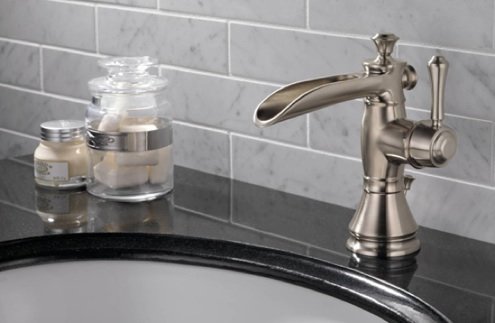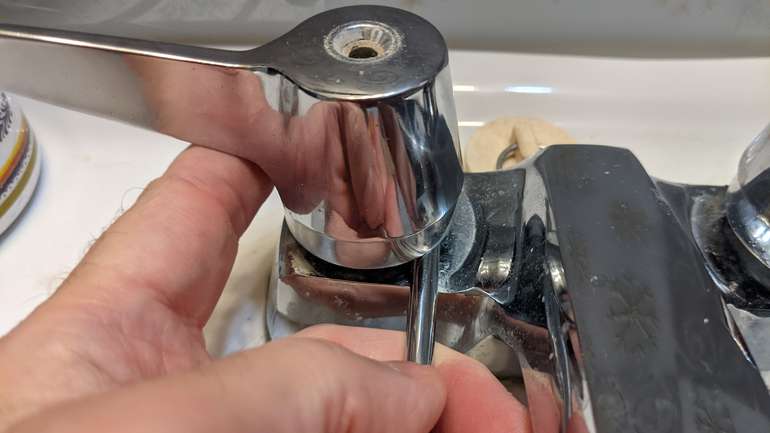Uncovering the Importance of Repairing a Dripping Faucet
Uncovering the Importance of Repairing a Dripping Faucet
Blog Article
This post which follows pertaining to What Causes Leaky Faucets & How To Fix Them is particularly engaging. Check it out for yourself and decide what you think of it.

Trickling faucets could seem like a minor aggravation, but their effect goes beyond simply the nuisance of the audio. From wasting water to sustaining unnecessary monetary expenses and wellness threats, ignoring a leaking tap can result in various consequences. In this write-up, we'll explore why it's important to address this usual household concern quickly and effectively.
Wastefulness of Water
Environmental Influence
Leaking taps contribute significantly to water waste. According to the Environmental Protection Agency (EPA), a single tap dripping at one drip per secondly can throw away more than 3,000 gallons of water each year. This not only stress water sources but likewise influences communities and wildlife depending on them.
Financial Prices
Boosted Water Expenses
Beyond the ecological impact, leaking faucets can pump up water bills considerably. The built up wastefulness in time converts into higher energy costs, which can have been prevented with prompt repairs.
Prospective Property Damage
Additionally, long term dripping can result in harm to components and surfaces surrounding the faucet. Water buildup can create discoloration, corrosion, and even structural issues if left ignored, leading to extra repair service prices.
Health Concerns
Mold and Mildew Development
The consistent visibility of dampness from a trickling tap produces a suitable atmosphere for mold and mildew growth. These fungi not just jeopardize indoor air quality yet additionally present health and wellness risks, specifically for people with respiratory conditions or allergies.
Waterborne Conditions
Stationary water in leaking taps can end up being a breeding ground for germs and various other microorganisms, increasing the danger of waterborne illness. Impurities such as Legionella microorganisms thrive in stagnant water, potentially resulting in major diseases when ingested or inhaled.
DIY vs. Professional Repair
Advantages and disadvantages of DIY Repair
While some might try to take care of a leaking faucet themselves, do it yourself repair services include their own collection of difficulties. Without proper expertise and tools, do it yourself attempts can exacerbate the concern or bring about insufficient repair work, extending the trouble.
Advantages of Hiring an Expert Plumber
Working with a professional plumber makes sure that the underlying root cause of the dripping faucet is attended to properly. Plumbings possess the knowledge and tools to diagnose and repair faucet issues efficiently, conserving time and decreasing the threat of additional damage.
Step-by-Step Guide to Repairing a Dripping Faucet
Devices Needed
Before trying to repair a trickling tap, collect the necessary devices, including a flexible wrench, screwdrivers, substitute parts (such as washing machines or cartridges), and plumber's tape.
Common Faucet Issues and Their Solutions
Determine the sort of tap and the specific problem causing the drip. Usual issues include damaged washers, corroded shutoff seats, or damaged O-rings. Describe maker instructions or on the internet tutorials for step-by-step support on repair services.
Safety nets
Regular Upkeep Tips
To prevent dripping faucets, perform regular upkeep such as cleaning aerators, inspecting for leaks, and changing damaged components without delay. Furthermore, think about installing water-saving tools or updating to much more reliable fixtures.
Importance of Prompt Repairs
Resolving leaking faucets as soon as they're discovered stops further water wastage and prospective damage, inevitably saving both water and money over time.
Effect On Building Worth
Assumption of Well-Maintained Residential Property
Preserving a home in good condition, including dealing with upkeep problems like leaking faucets, improves its perceived value and value amongst prospective purchasers or occupants.
Influence on Resale Worth
Residences with properly maintained plumbing components, consisting of taps, command greater resale worths in the realty market. Dealing with leaking taps can add to a favorable perception throughout residential property assessments and settlements.
Ecological Responsibility
Private Contribution to Conservation
Taking responsibility for taking care of dripping taps straightens with more comprehensive initiatives towards water preservation and environmental sustainability. Every individual's activities jointly make a considerable influence on protecting priceless resources.
Lasting Living Practices
By prioritizing timely fixings and embracing water-saving routines, individuals add to lasting living practices that benefit both existing and future generations.
Conclusion
Dealing with a trickling faucet exceeds plain ease; it's a necessary action toward preserving water, reducing monetary prices, and protecting wellness and residential or commercial property. Whether through DIY fixings or expert aid, acting to fix leaking faucets is a small yet impactful method to advertise accountable stewardship of resources and add to a much healthier, extra sustainable future.
How to Fix a Dripping or Leaky Faucet
A leaking faucet is one of the most common problems that homeowners encounter, but it being commonplace doesn’t make it any less annoying. The constant drip drip drip of a leaking bathtub faucet, showerhead, or sink tap can disturb your home’s serenity. Left neglected, a dripping faucet can also result in higher water bills and discoloration or mold growth in your sink or plumbing fixtures.
Fortunately, you don’t have to be a trained plumber to know how to stop a dripping faucet. With some basic tools, replacement parts, and a little patience, leaky faucet repair is a breeze. In this article, we’ll explain what causes dripping faucets and how you can fix them.
What Causes a Leaking Faucet?
Kitchen and bathroom faucets come in all manner of designs, but most involve some combination of valves, O-rings, seals, and washers. The O-ring is usually the weakest link, but any one of these pieces can wear down over time. Heat, moisture, temperature fluctuations, minerals, mold, and movement can contribute to warping and corrosion, breaking the watertight seal. This just comes with the territory of being a homeowner. Everything is always subject to wear and tear, and some component parts of your appliances and fixtures need to be replaced on occasion. At least replacement O-rings are cheap!
More rarely, dripping faucets can be a symptom of excessively high water pressure. Were this the case in your home, you would probably notice that the leak is not isolated to one faucet. Water pressure issues are harder to resolve on your own. We recommend contacting a professional plumber if you suspect your water pressure is too high.
How to Fix a Dripping Faucet
Pipe wrench or monkey wrench Allen wrench set Screwdrivers Old towel or rag Shut off the water.
Before you do anything, you need to turn off the water to keep from drenching your kitchen or bathroom. You should find a valve under the sink and against the wall. Once you’ve turned this valve, try turning the faucet on to confirm that the water source has been cut off.
If you can’t locate your local valve for the faucet you’re working on, you can always shut off the water to the house at the main valve. Of course, this will prohibit anyone from using the sinks, showers, or toilets while you’re working on the faucet that’s giving you trouble.
Plug or block the drain.
You’ll be disassembling the faucet and removing some small bits of hardware. Plug the drain with a stopper or rag to avoid the possibility of a small screw falling into your P-trap.
Take apart the faucet assembly.
There are several varieties of kitchen and bathroom faucets, each with its own manner of assembly. For detailed instructions on how to disassemble your faucet, you can refer to the fixture’s manual or contact the manufacturer. If you know whether you have a ball, disc, cartridge, or compression faucet, you can find detailed schematics online.
In general, you need to begin by removing the faucet handles. You might notice a small screw that you’ll need to remove with a screwdriver or Allen wrench. If you don’t see any visible securing hardware, it’s likely hidden under a decorative cap that can be unscrewed or popped off with flathead screwdriver.
Remove each piece methodically, consulting a schematic when necessary. Take notes or arrange the pieces in such a way to make it easier to correctly reassemble the faucet later.
Remove the cartridge.
Once you’ve removed the handles and securing hardware, you should be able to remove the valve cartridge or stem. Some cartridges will slide right out. Other faucet models will require you to loosen a nut with a pipe wrench before you can remove the valve stem.
Examine the exposed hardware.
With the cartridge or stem removed, inspect the component parts. Check the rubber O-rings for wear and tear. Also examine the seat washer for corrosion or other damage. These pieces are usually the responsible parties for a dripping faucet, but it’s worth inspecting the other component parts while you have the faucet disassembled.
Find replacement parts.
Once you’ve identified which faucet component has failed, find an identical replacement. Your local hardware store should have O-rings, seat washers, and other standard components in stock. If you have a luxury or uncommon faucet, you may have to contact the manufacturer for a replacement part.
It’s a good idea to take your old parts with you to the hardware store so you can compare them with the store’s inventory and be sure you’re purchasing the correct replacement.
Reassemble the faucet.
With your new parts in hand, reconstruct the faucet and handles. Don’t be tempted to overtighten screws or nuts. You might think this could create a better seal, but it can instead damage or bend a delicate part of the assembly and create a new problem for you.
Turn on the water and test the faucet.
The only thing left to do is test your work. Unplug the sink, turn the water back on, and try the faucet. Congratulate yourself on a job well done!
https://www.libertyhomeguard.com/how-to-fix-a-dripping-or-leaky-faucet/

I recently found that content about while surfing around the search engines. Sharing is caring. Helping others is fun. We love your readership.
Report this page